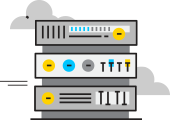SMOTE, short for Synthetic Minority Over-sampling Technique, is a powerful data augmentation method used in machine learning to address the problem of imbalanced datasets. In many real-world scenarios, datasets often contain imbalanced class distributions, where one class (the minority class) has significantly fewer instances compared to the other classes (majority classes). This imbalance can lead to biased models that perform poorly in recognizing the minority class, leading to suboptimal predictions.
SMOTE was introduced to tackle this issue by generating synthetic samples of the minority class, thereby balancing the class distribution and enhancing the model’s ability to learn from the minority class. This technique has found numerous applications in various fields, such as medical diagnosis, fraud detection, and image classification, where imbalanced datasets are prevalent.
The history of the origin of SMOTE and the first mention of it
SMOTE was proposed by Nitesh V. Chawla, Kevin W. Bowyer, Lawrence O. Hall, and W. Philip Kegelmeyer in their seminal paper titled “SMOTE: Synthetic Minority Over-sampling Technique” published in 2002. The authors recognized the challenges posed by imbalanced datasets and developed SMOTE as an innovative solution to mitigate the bias caused by such datasets.
The research by Chawla et al. demonstrated that SMOTE significantly improved the performance of classifiers when dealing with imbalanced data. Since then, SMOTE has gained popularity and has become a fundamental technique in the field of machine learning.
Detailed information about SMOTE
The internal structure of SMOTE – How SMOTE works
SMOTE works by creating synthetic samples for the minority class by interpolating between existing instances of the minority class. The key steps of the SMOTE algorithm are as follows:
- Identify the minority class instances in the dataset.
- For each minority instance, identify its k nearest neighbors within the minority class.
- Randomly select one of the k nearest neighbors.
- Generate a synthetic instance by taking a linear combination of the selected neighbor and the original instance.
The SMOTE algorithm can be summarized in the following equation, where x_i represents the original minority instance, x_n is a randomly selected neighbor, and α is a random value between 0 and 1:
Synthetic Instance = x_i + α * (x_n – x_i)
By iteratively applying SMOTE to the minority class instances, the class distribution is rebalanced, resulting in a more representative dataset for training the model.
Analysis of the key features of SMOTE
The key features of SMOTE are as follows:
-
Data Augmentation: SMOTE augments the minority class by generating synthetic samples, addressing the class imbalance problem in the dataset.
-
Bias Reduction: By increasing the number of minority class instances, SMOTE reduces the bias in the classifier, leading to improved predictive performance for the minority class.
-
Generalizability: SMOTE can be applied to various machine learning algorithms and is not limited to any specific model type.
-
Easy Implementation: SMOTE is straightforward to implement and can be seamlessly integrated into existing machine learning pipelines.
Types of SMOTE
SMOTE has several variations and adaptations to cater to different types of imbalanced datasets. Some of the commonly used types of SMOTE include:
-
Regular SMOTE: This is the standard version of SMOTE as described above, which creates synthetic instances along the line connecting the minority instance and its neighbors.
-
Borderline SMOTE: This variant focuses on generating synthetic samples near the borderline between the minority and majority classes, making it more effective for datasets with overlapping classes.
-
ADASYN (Adaptive Synthetic Sampling): ADASYN improves upon SMOTE by assigning higher importance to the minority instances that are harder to learn, resulting in better generalization.
-
SMOTEBoost: SMOTEBoost combines SMOTE with boosting techniques to further enhance the performance of classifiers on imbalanced datasets.
-
Safe-Level SMOTE: This variant reduces the risk of overfitting by controlling the number of synthetic samples generated based on the safety level of each instance.
Here is a comparison table summarizing the differences between these SMOTE variants:
| SMOTE Variant | Approach | Focus | Overfitting Control |
|---|---|---|---|
| Regular SMOTE | Linear interpolation | N/A | No |
| Borderline SMOTE | Non-linear interpolation | Near the border of classes | No |
| ADASYN | Weighted interpolation | Hard-to-learn minority cases | No |
| SMOTEBoost | Boosting + SMOTE | N/A | Yes |
| Safe-Level SMOTE | Linear interpolation | Based on safety levels | Yes |
Ways to use SMOTE
SMOTE can be employed in several ways to improve the performance of machine learning models on imbalanced datasets:
-
Preprocessing: Apply SMOTE to balance the class distribution before training the model.
-
Ensemble Techniques: Combine SMOTE with ensemble methods like Random Forest or Gradient Boosting to achieve better results.
-
One-Class Learning: Use SMOTE to augment the one-class data for unsupervised learning tasks.
Problems and Solutions
While SMOTE is a powerful tool for dealing with imbalanced data, it is not without its challenges:
-
Overfitting: Generating too many synthetic instances can lead to overfitting, causing the model to perform poorly on unseen data. The use of Safe-Level SMOTE or ADASYN can help control overfitting.
-
Curse of Dimensionality: SMOTE’s effectiveness can diminish in high-dimensional feature spaces due to the sparsity of data. Feature selection or dimensionality reduction techniques can be employed to address this issue.
-
Noise Amplification: SMOTE may generate noisy synthetic instances if the original data contains outliers. Outlier removal techniques or modified SMOTE implementations can mitigate this problem.
Main characteristics and other comparisons with similar terms
| Characteristics | SMOTE | ADASYN | Random Oversampling |
|---|---|---|---|
| Type | Data Augmentation | Data Augmentation | Data Augmentation |
| Synthetic Sample Source | Nearest Neighbors | Similarity-based | Duplicating Instances |
| Overfitting Control | No | Yes | No |
| Handling Noisy Data | Yes | Yes | No |
| Complexity | Low | Moderate | Low |
| Performance | Good | Better | Varies |
The future of SMOTE and imbalanced data handling in machine learning is promising. Researchers and practitioners continue to develop and improve upon existing techniques, aiming to address the challenges posed by imbalanced datasets more effectively. Some potential future directions include:
-
Deep Learning Extensions: Exploring ways to integrate SMOTE-like techniques into deep learning architectures to handle imbalanced data in complex tasks.
-
AutoML Integration: Integrating SMOTE into Automated Machine Learning (AutoML) tools to enable automated data preprocessing for imbalanced datasets.
-
Domain-Specific Adaptations: Tailoring SMOTE variants to specific domains such as healthcare, finance, or natural language processing to improve model performance in specialized applications.
How proxy servers can be used or associated with SMOTE
Proxy servers can play a significant role in enhancing the performance and privacy of data used in SMOTE. Some possible ways proxy servers can be associated with SMOTE include:
-
Data Anonymization: Proxy servers can anonymize sensitive data before applying SMOTE, ensuring that the synthetic instances generated do not reveal private information.
-
Distributed Computing: Proxy servers can facilitate distributed computing for SMOTE implementations across multiple locations, allowing efficient processing of large-scale datasets.
-
Data Collection: Proxy servers can be used to collect diverse data from various sources, contributing to the creation of more representative datasets for SMOTE.
Related links
For more information about SMOTE and related techniques, you can refer to the following resources:
- Original SMOTE Paper
- ADASYN: Adaptive Synthetic Sampling Approach for Imbalanced Learning
- SMOTEBoost: Improving Prediction of the Minority Class in Boosting
- Borderline-SMOTE: A New Over-Sampling Method in Imbalanced Data Sets Learning
- Safe-Level SMOTE: Safe-Level Synthetic Minority Over-Sampling Technique for Handling the Class Imbalance Problem
In conclusion, SMOTE is a vital tool in the machine learning toolbox that addresses the challenges of imbalanced datasets. By generating synthetic instances for the minority class, SMOTE enhances the performance of classifiers and ensures better generalization. Its adaptability, ease of implementation, and effectiveness make it an indispensable technique in various applications. With ongoing research and technological advancements, the future holds exciting prospects for SMOTE and its role in the advancement of machine learning.




